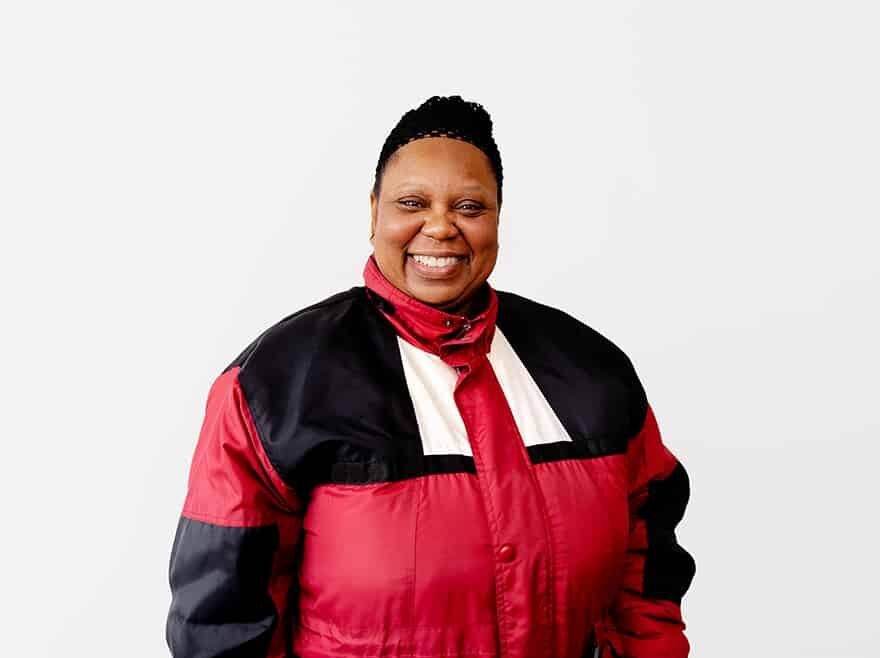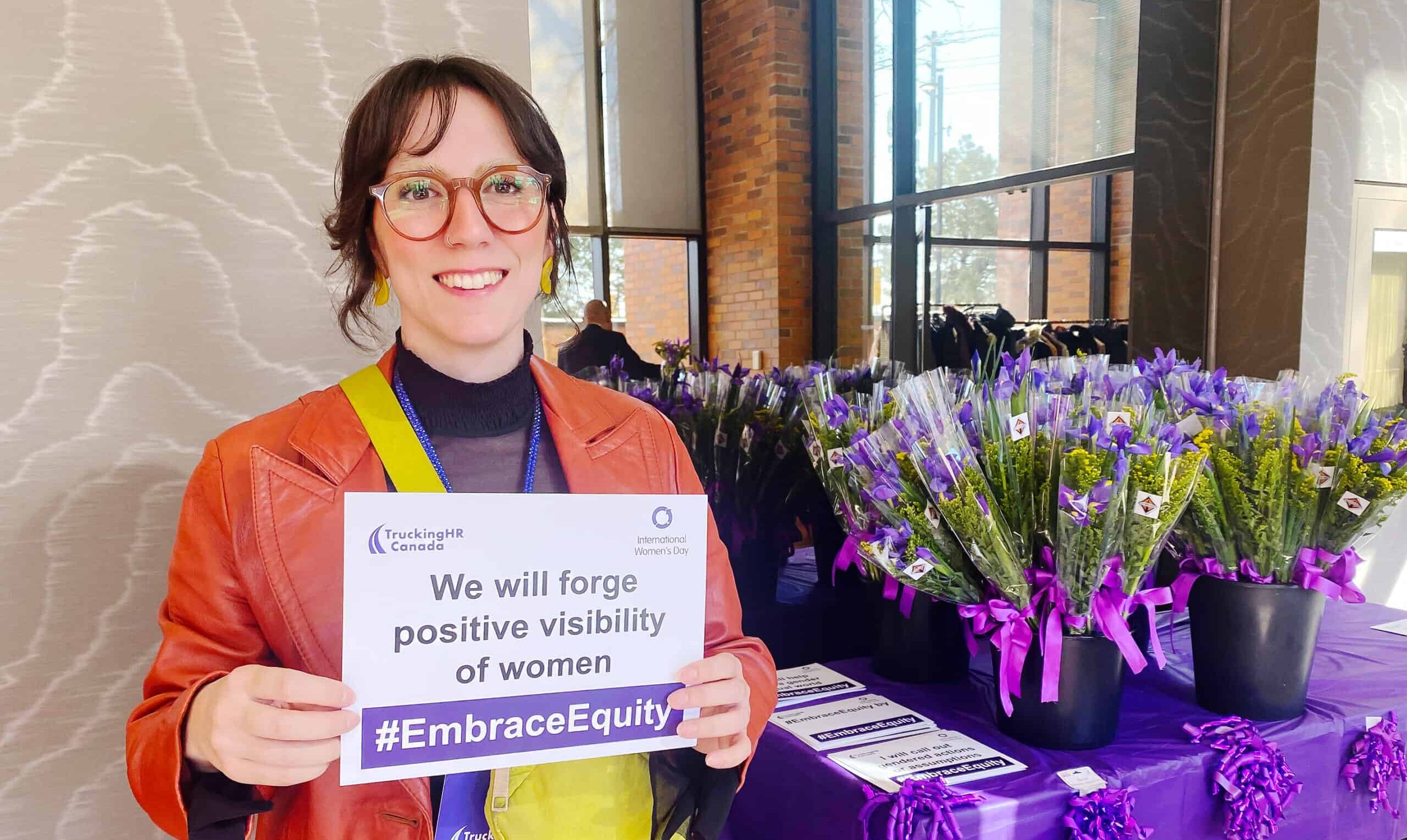The announcement of this year’s annual musket-funded female AZ scholarship and a look at the women who have influenced the transportation industry in honor of women’s history month.
In honour of Women’s History Month, Musket Transport and CHET hold an annual tradition of recognizing women in the trucking and transportation industry throughout the month of March. This is primarily represented by the presentation of the Annual Musket-Funded Female AZ Scholarship. This year’s scholarship winner, Patricia, will receive full funding to complete the AZ Training Program at CHET, taking another step toward recruiting more women behind the wheel.

Tired of office jobs, Patricia discovered a love for driving and got her BZ license, allowing her to find work as a bus driver. She explains that from the moment she got behind the wheel of a bus, she knew her next goal was to learn to drive a truck. Now, following in the footsteps of her niece who has been a commercial driver for several years, Patricia has begun her training and is fully committing herself to her studies.
This year, during Women’s History Month, we also want to recognize the women who have contributed to our industry throughout the years—breaking down stereotypes and innovating change and advancement.
LUELLA BATES
 Around the year 1920, Luella Bates was the first woman in New York to have a commercial truck driving license. During the first World War, she was a test driver that traveled throughout the state of Wisconsin. Even after the war when most women were let go to make jobs for returning soldiers, Luella Bates remained on as a demonstrator and driver. She was a skilled driver as well as a mechanic, handling all the maintenance on her own truck.
Around the year 1920, Luella Bates was the first woman in New York to have a commercial truck driving license. During the first World War, she was a test driver that traveled throughout the state of Wisconsin. Even after the war when most women were let go to make jobs for returning soldiers, Luella Bates remained on as a demonstrator and driver. She was a skilled driver as well as a mechanic, handling all the maintenance on her own truck.
LILLIE ELIZABETH DRENNAN
Lillie Elizabeth Drennan is credited as the first licensed female truck driver and owner of a trucking company. In 1928, Drennan and her husband took advantage of the oil boom and started their own trucking company, which she later became the sole owner of. She received her commercial truck-driver’s license in 1929 after the Railroad Commission started supervising the motor-freight business in Texas.
MARY WALTON
Mary Walton made huge advancements in reducing the air and noise pollution generated by railroads. In 1879, she patented a method for redirecting emissions through water tanks to trap the pollutants and transport them through the sewage system. Later, in 1881, Walton patented a system that used cotton and sand in a wooden box around an elevated track to reduce noise pollution. Thomas Edison had been asked to find a solution for the noise, but failed. Walton succeeded where Edison had struggled to find a solution. In addition to being an early advocate for women, Walton was an early environmentalist as well.

MARY ENGLE PENNINGTON
Mary Pennington was a bacteriologist who redesigned railroad refrigerator cars to improve food safety sometime around the turn of the century. Upon completing her studies at Yale, Pennington went to work as a bacteriologist focusing on bacteria toxicity levels in dairy products. She was hired in 1905 by the U.S. Department of Agriculture’s Bureau of Chemistry, where she researched fish and poultry packing and freezing methods. After the Pure Food and Drug Act of 1906, Pennington became the head of the newly created Food Research Laboratory, where she remained until 1919. This work led Pennington to examine the rail transportation of food products. Based on her research, Pennington designed a reefer with added insulation, improved storage racks, better drainage, and a forced-air system that maximized air circulation in the car. The added expense of these improvements caused railroad officials to resist making the changes for several years, but Pennington eventually prevailed and refrigerated cars became common.
EDITH M. FLANIGEN
Earning a staggering 102 U.S. patents during her career, Edith Flanigen is one of the most inventive chemists of all time. In 1956, Flanigen shifted focus to work on the emerging technology of “molecular sieves.” During her career, Flanigen invented or developed over 200 synthetic substances—of which “zeolyte Y” is considered the most important for its role in the refinement of petroleum. Crude oil, or petroleum, is a highly complex substance that varies substantially in quality and chemical content from source to source. To be used as a reliable fuel, crude oil must be broken down into its constituent parts. Zeolyte Y works as a catalyst to optimize the breakdown process. Molecular sieves have made gasoline production more efficient, cleaner, and safer worldwide. Flanigen’s sieves have tremendous application beyond the petroleum refining industry; molecular sieves are used in both water purification and environmental cleanup work. Her contributions to science earned her the National Medal of Technology in 2014, presented to her by President Barack Obama at the Whitehouse.

Furthering its commitment to uplifting women in the industry, Musket actively remains involved in the discussion of gender equity and recruitment by attending events such as the annual Women With Drive Leadership Summit this month. We pledge to continue to create positive visibility of women, and to embrace equity.
Join us as we celebrate these amazing women during this month and all months for their contribution to essential industries the world over!


